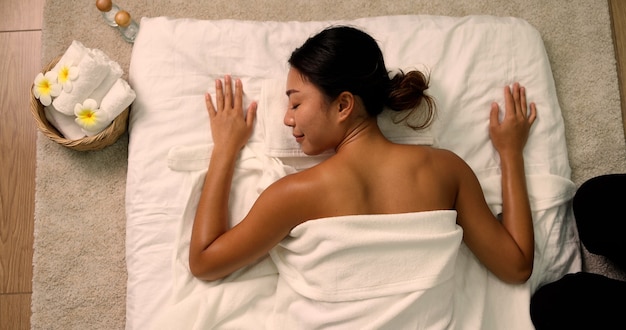
n the realm of alternate medicine and holistic recovery, reflexology attracts attention as a fascinating and progressively preferred technique. This ancient healing technique, based upon the concept that particular factors on the feet, hands, and ears represent different body components and body organs, has actually been mesmerizing both practitioners and clients alike for centuries.
Revealing the Essence of Reflexology Reflexology is greater than just a foot massage; it’s a methodical method that applies pressure to particular points to promote recovery and balance throughout the body. The underlying concept suggests that these stress factors are connected to different body organs and body systems via energy networks. By promoting these factors, reflexologists intend to clear obstructions, improve circulation, and recover the body’s natural stability.
” The human foot is a work of art of design and a masterpiece.” – Leonardo da Vinci The Historical Tapestry of Reflexology While the modern-day practice of reflexology was created in the 20th century, its origins can be mapped back to ancient worlds. Proof suggests that similar methods were made use of in ancient Egypt, as portrayed in burial place paintings going back to 2330 BC. Typical Chinese medication has actually long identified the interconnectedness of body parts, affecting the advancement of reflexology as we understand it today.
In the very early 1900s, Dr. William Fitzgerald presented the principle of “area treatment” to the Western globe, which later on developed right into modern-day reflexology through the job of Eunice Ingham in the 1930s. Ingham, typically described as the “mommy of reflexology,” mapped the entire body onto the feet, developing the foundation for modern reflexology techniques.
The Science Behind the Practice While doubters might question the clinical basis of reflexology, advocates suggest that its benefits are rooted in the body’s neurological and energy systems. The application of stress is believed to stimulate the nerve system, advertising leisure and minimizing anxiety. 派遣リフレ recommend that reflexology might set off the launch of endorphins, the body’s all-natural pain-relieving and mood-enhancing chemicals.
Possible Benefits and Applications Advocates of reflexology claim a variety of advantages, including:
Stress reduction and leisure Improved circulation Pain monitoring, especially for migraines and neck and back pain Enhanced rest high quality Boosted immune system function Alleviation of digestion problems Support for hormone equilibrium While scientific study on reflexology is continuous, many individuals report considerable enhancements in their overall wellness after receiving therapies. It’s vital to note that reflexology is usually thought about a complementary therapy and ought to not change conventional treatment.
The Reflexology Experience A normal reflexology session lasts between 30 to 60 minutes. The professional starts by analyzing the client’s health history and present worries. The customer then removes their socks and shoes and sits comfortably or rests. Utilizing their hands, fingers, and thumbs, the reflexologist uses varying degrees of stress to particular points on the feet, hands, or ears.
Lots of people describe the experience as deeply relaxing, commonly reporting a sense of heat or tingling experiences throughout their body during the session. Some may also sleep, stiring up sensation rejuvenated and renewed.
Integrating Reflexology right into Modern Wellness As the world significantly embraces holistic methods to health and wellness and health, reflexology has actually found its area in spas, wellness centers, and also some medical centers. It’s usually made use of along with various other treatments such as massage therapy, acupuncture, and aromatherapy to develop thorough wellness experiences.
For those interested in exploring reflexology in your home, there are various self-help methods and devices offered. From basic foot rollers to detailed reflexology charts, people can find out to use fundamental principles of reflexology to enhance their everyday wellness routines.
The Future of Reflexology As research in the field of alternate and corresponding medicine remains to advance, reflexology might get more recognition in the clinical community. Continuous studies are exploring its possible applications in different wellness problems, from anxiousness and anxiety to cancer care support.
“The feet are the mirror of the body.” – Eunice Ingham Whether deemed a scientific approach to recovery or an alternative art type, reflexology provides an unique perspective on the body’s interconnectedness. As even more people seek natural and non-invasive ways to support their wellness, this old technique proceeds to discover relevance in our modern-day globe, welcoming us to check out the recovery possibility that lies at our fingertips– or instead, at our feet.
Revealing the Essence of Reflexology Reflexology is more than just a foot massage therapy; it’s a systematic technique that uses pressure to certain points to promote recovery and balance throughout the body. – Leonardo da Vinci The Historical Tapestry of Reflexology While the modern practice of reflexology was created in the 20th century, its origins can be traced back to ancient civilizations. The Science Behind the Practice While doubters might examine the scientific basis of reflexology, supporters argue that its advantages are rooted in the body’s neurological and power systems. The Reflexology Experience A normal reflexology session lasts in between 30 to 60 mins. – Eunice Ingham Whether watched as a clinical method to healing or a holistic art type, reflexology supplies a distinct perspective on the body’s interconnectedness.
